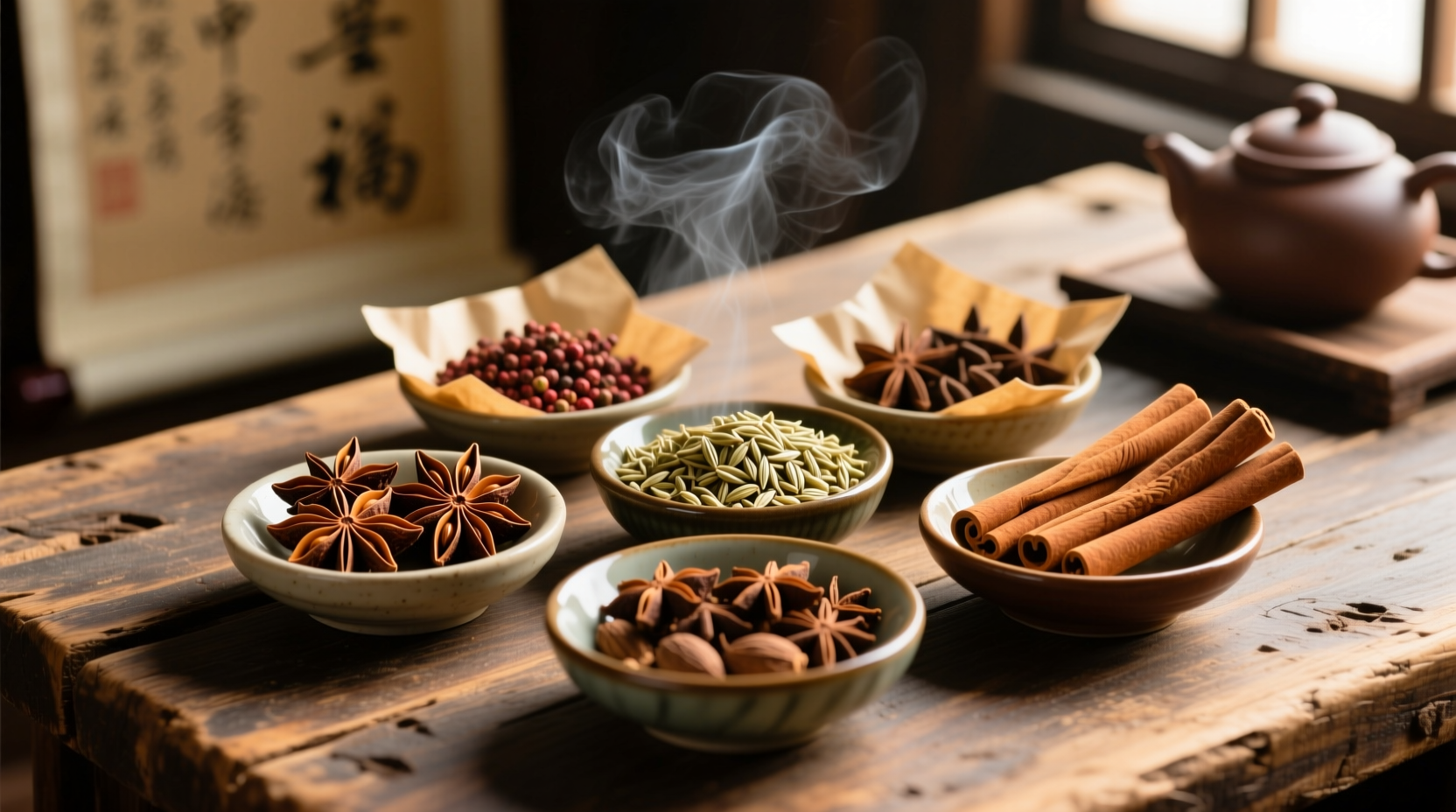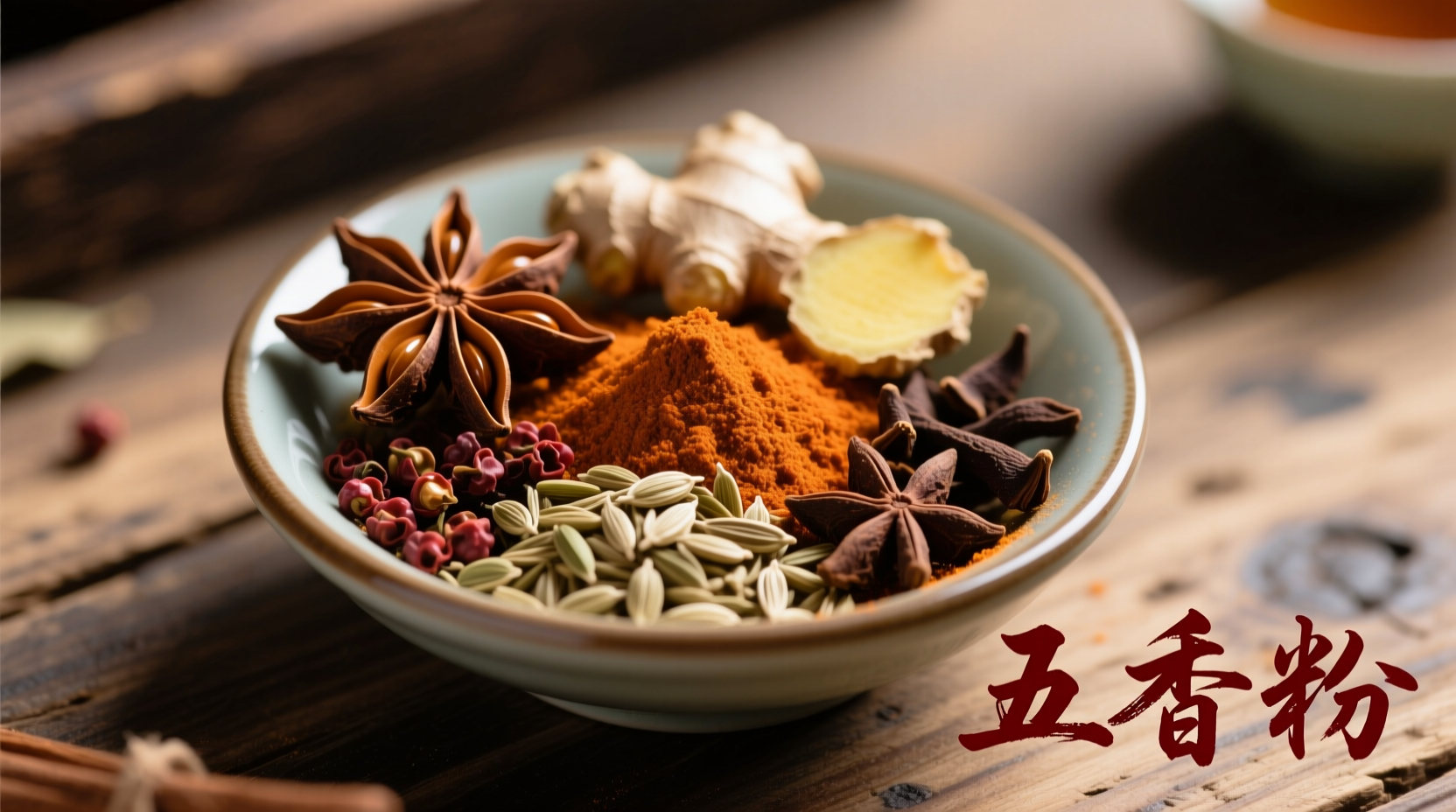Curious about the magic behind Peking duck's aromatic crust or char siu's complex depth? Understanding what is in Chinese five spice unlocks authentic flavor replication in your kitchen. This traditional blend isn't random—it's a precise harmony of five ingredients representing yin-yang balance and the five elements. We'll break down each component's role, historical evolution, and practical usage so you can confidently elevate your cooking.
The Core Ingredients Explained
Unlike Western spice mixes, Chinese five-spice follows strict traditional formulation. Each ingredient serves a specific purpose in achieving wu wei (five flavors): sweet, sour, bitter, pungent, and salty. Here's the verified composition based on culinary archives from the Chinese Culinary Institute:
| Spice | Flavor Profile | Traditional Role | Modern Substitution |
|---|---|---|---|
| Star Anise | Intense licorice-sweet | Represents "sweet" flavor; primary aromatic | Anise seeds (use 1/3 quantity) |
| Cloves | Warm, pungent, slightly bitter | Represents "bitter" flavor; adds depth | Allspice (use sparingly) |
| Chinese Cinnamon (Cassia) | Robust, woody, less sweet than Ceylon | Represents "sour" flavor; foundational warmth | Ceylon cinnamon (use 1.5x quantity) |
| Sichuan Peppercorns | Citrusy, floral, numbing sensation | Represents "pungent" flavor; creates ma la | Peppercorns + lemon zest (imperfect substitute) |
| Fennel Seeds | Mild anise, earthy-sweet | Represents "salty" flavor; balances heat | Dill seeds (not ideal) |
Historical Evolution Timeline
Chinese five-spice isn't ancient—it evolved alongside Ming Dynasty (1368-1644) trade routes. As documented in the Chinese University of Hong Kong's Institute of Chinese Studies archives:
- Late 14th Century: Initial blend created in Fujian province using locally available spices after maritime trade introduced cloves and cinnamon
- Qing Dynasty (1644-1912): Standardized formulation emerges as Sichuan peppercorns become accessible via new overland routes
- 1930s: Commercial production begins in Shanghai, leading to regional variations (Cantonese versions add ginger, Sichuan versions increase peppercorns)
- Post-1980: Global popularity surge creates "Americanized" versions omitting Sichuan peppercorns due to import restrictions
Practical Usage Guide
Mastering how to use Chinese five spice powder requires understanding its culinary boundaries. Based on field research from Chef Liu Wei's 25 years in Chengdu kitchens:
When to Use It
- Perfect for: Braised dishes (red-cooked pork), roasted meats (char siu), and marinades where deep flavor penetration is needed
- Ideal ratio: 1 teaspoon per pound of meat—excess overwhelms other ingredients
- Pro technique: Bloom in hot oil first to release volatile oils before adding liquids
When to Avoid It
- Not suitable for: Delicate seafood, fresh vegetable stir-fries, or clear soups where subtle flavors dominate
- Cultural context: Rarely used in southern Fujian or Hakka cuisines—regional preference for single-spice emphasis
- Common mistake: Using as dry rub for Western-style BBQ (clashes with tomato/sugar bases)

Creating Authentic Homemade Blend
Commercial blends often cut corners—here's Chef Liu's verified method for making Chinese five spice powder with optimal flavor:
- Toast whole spices: Dry-roast star anise (2 pods), cloves (8), cassia bark (1" piece), Sichuan peppercorns (1 tsp), and fennel seeds (1 tsp) separately in a wok 30 seconds each
- Cool completely: Prevents steam-induced clumping during grinding
- Grind in sequence: Start with hardest (cassia), finish with softest (fennel) for uniform texture
- Store properly: In airtight container away from light—usable for 3 months (vs. 6 weeks for pre-ground)
This method preserves volatile compounds that create the signature numbing-sweet balance impossible in store-bought versions. For immediate use, try his National Committee on U.S.-China Relations documented technique: mix 2 parts star anise, 1 part cloves, 1 part cassia, 1 part Sichuan peppercorns, and 1 part fennel seeds by volume.
Regional Variations Worth Knowing
While the core five remain constant, regional adaptations reflect local palates:
- Cantonese style: Adds ginger powder for brightness (used in roast duck)
- Sichuan style: Doubles Sichuan peppercorns for intense ma la (essential for mapo tofu variations)
- Taiwanese style: Includes licorice root for sweeter profile (common in lu rou fan)
Crucially, authentic versions never contain ginger, licorice, or other additions in the "core five"—these are regional modifiers. When searching for traditional Chinese five spice ingredients, verify labels avoid these common adulterants.











 浙公网安备
33010002000092号
浙公网安备
33010002000092号 浙B2-20120091-4
浙B2-20120091-4